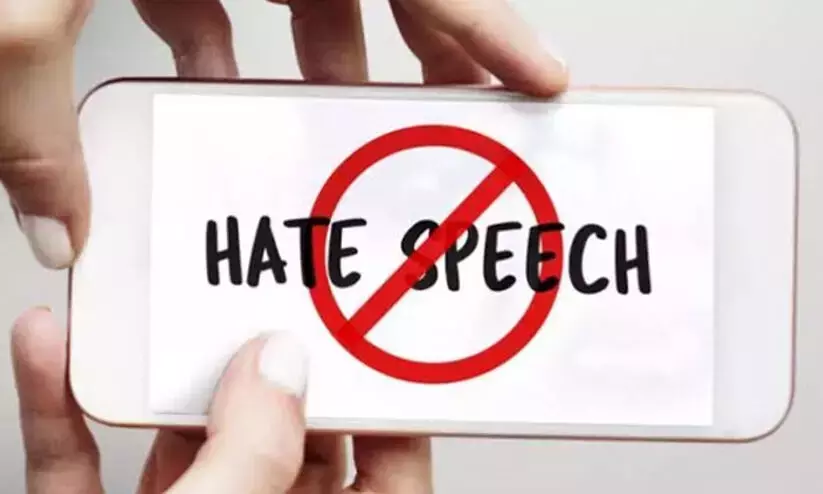
Indigenous cultural genocide in Canada: a reckoning
text_fieldsMary Simon was officially sworn in as Canada's 30th Governor-General on Monday, July 26, 2021, making her the first indigenous person to hold this position. A well-known Inuit rights activist, Simon's appointment into office comes at a time when Canada's colonial history against indigenous people has taken the spotlight once more.
Inuits are a group of culturally similar indigenous peoples inhabiting the Arctic regions of Greenland, Canada, and Alaska.
On May 28, 2021, 215 bodies were found buried near the former Kamloops Indian Residential School site. The remains are believed to be of the indigenous children that attended the residential school in question.
On June 4, an investigation into two cemetery sites at the Brandon Indian Residential School revealed a potential third burial area, along with 104 graves out of which only 78 are accountable through records.
A substantial discovery was made on June 25, whereas as many as 751 unmarked graves were discovered near the former Marieval Indian Residential School.
Five days later, on June 30, 182 unmarked gravesites were found near the former St. Eugene's Mission Residential School, although sources state that the local community used to use the area for burials prior to the construction of the school, so the gravesites may not be solely of Indigenous school children.
However, on July 12, another 160 unmarked graves were identified on the site of the former Kuper Island Indian Industrial school.
The numbers are disturbing and beg the question— what were residential schools? In Canada, the Indian Residential School System were a mandatory boarding school for indigenous children, funded by the government and operated by Christian missionaries. The system was implemented in the 19th Century and functioned solely to forcibly assimilate indigenous children into dominant Canadian culture, forcing them to cut all ties with their cultural roots and speak the colonizer's language. The last residential school in the nation was dismantled only in 1996.
150,000 indigenous children are said to have attended these residential schools, and the estimated deaths as a result of attending these schools, largely unknown due to inconsistent records, vary between 3,200 to a shocking 30,000. Recent uncovering of unmarked graves sheds more light on these numbers, highlighting once more the atrocities of the residential school system brought about by indigenous communities. What really happened at these schools?
The indigenous peoples in Canada comprise the First Nations, the Inuits and the Métis and makeup almost 5% of the Canadian population. Indigenous peoples were the original inhabitants of the land now known as Canada.
The residential school system, enacted mainly through the Indian Act of 1876, was an effort to alienate indigenous communities from their culture through forced "civilization".
In classic colonizer fashion, indigenous people were considered to be "savages'', those whose way of life cannot be integrated into a "civilized society". Continuous efforts were made to rid indigenous people of their culture and identity, and the residential school system was a large undertaking aimed at doing so.
Children were forcefully removed from their homes to attend these schools, and many never returned. The schools were intentionally located at vast distances from their homes, making it difficult for parents to visit their children. Other highly restrictive measures such as the pass system ensured limited contact between parents and children since officials believed frequent family visits were counteractive to the planned assimilation of indigenous children.
Once at the schools, the children suffered mental, physical and sexual abuse at the hands of the authorities.
The residential school system was federally owned and government-funded, wherein the government provided the facilities, and churches ran the schools by providing teachers and devising their own lesson plans. Since the intention was to convert Indigenous children to Christianity, children were reprimanded and punished for speaking their native language or for practising their own faith.
The abysmal conditions by which the schools were run further deteriorated the well-being of the attending indigenous children. The schools were poorly built, heated and provided unsanitary facilities. Countless children died from malnutrition, tuberculosis, and other illnesses after attending these schools.
Canada issued a formal apology for these acts only in 2008. The Truth and Reconciliation Commission (TRC) was set up in the same year to investigate further the happenings of residential schools. They gathered statements from over 7,000 residential school survivors and in 2015, concluded their report on the history and lasting effects of the residential school system, rightfully calling the ordeal cultural genocide.
Recent uncovering of unmarked graves near former residential schools led to widespread outrage, both within the Indigenous community as well as outside it.
Monuments commemorating controversial colonial figures, such as Canada's first Prime Minister John A. Macdonald was called to be removed— some were vandalized and dismembered. Two dozen churches were burned by July 4 in protest.
July 1, usually celebrated as Canada Day, was marked by demonstrations across the country this year. Demonstrators wore orange to honour the survivors and victims of the residential school system while calling out the country's history of cultural genocide against Indigenous communities.
Following the uncovering of hundreds of unmarked graves believed to be of indigenous school children, a call for further investigation and searches in other residential school areas has been made, with some searches already underway. The federal government has also pledged 27 million Canadian dollars in funding to identify the unmarked graves. Other provincial governments have also pledged additional funding to further search efforts.
The Canadian School Boards Association also plans to develop a curriculum on indigenous history to be taught in all schools in Canada from Kindergarten to Grade 12.
These efforts, aimed at addressing the atrocities committed against indigenous peoples throughout the nation's history will be for nought if the country fails to acknowledge and mend the discrimination the indigenous community continues to face today.























